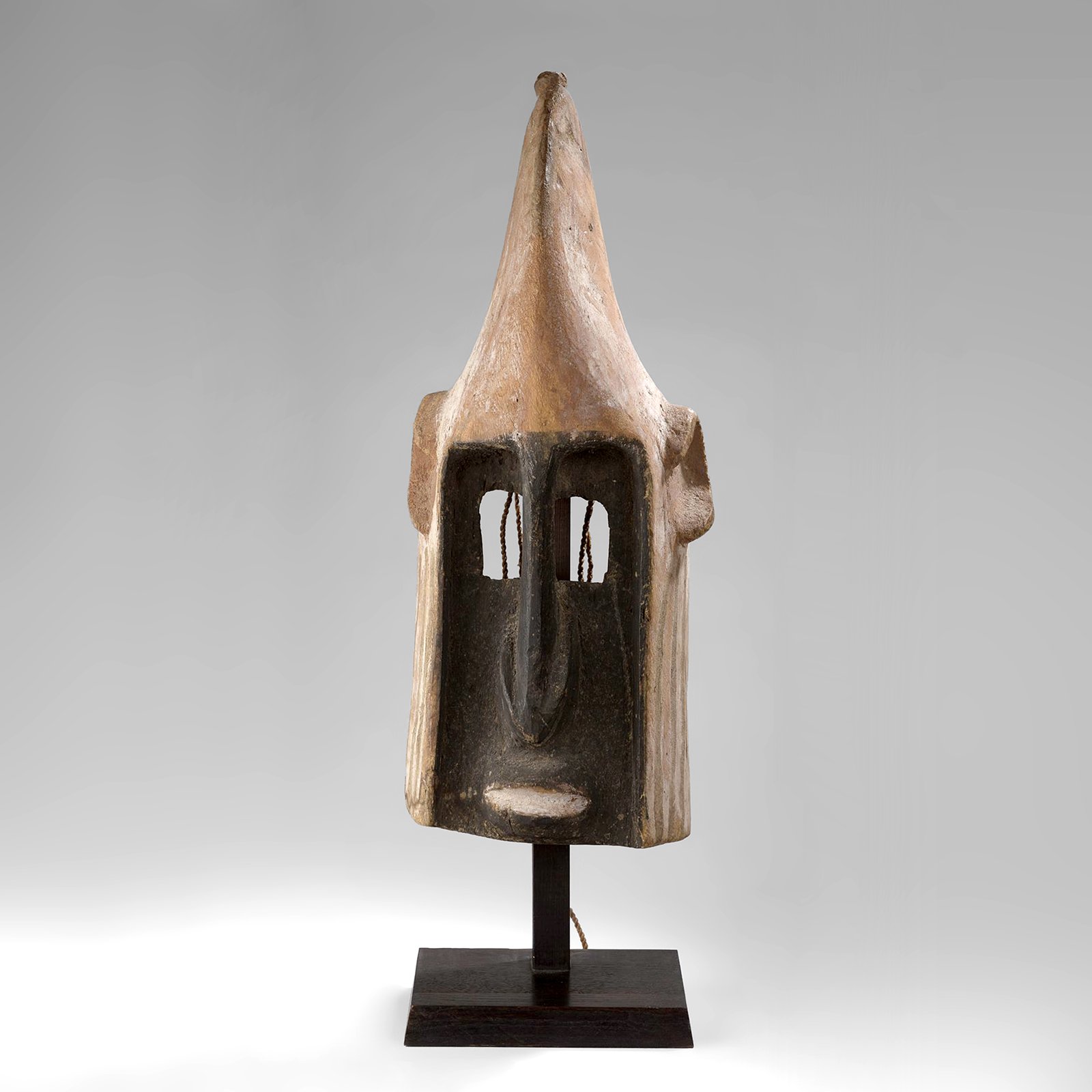 Image 1 of 5
Image 1 of 5

 Image 2 of 5
Image 2 of 5

 Image 3 of 5
Image 3 of 5

 Image 4 of 5
Image 4 of 5

 Image 5 of 5
Image 5 of 5






Samana Dogon Mask
Dogon peoples
Ca. 1930
H. 46,5 cm
This mask is identified as representing a Samo, a member of a neighboring ethnic group with a reputation for aggressive, warlike behavior. Dogon artists depict many human characters in their masks, such as hogons, binu priests, elders, young people, craft specialists (including smiths, leatherworkers, hunters, and healers), and foreigners, such as Bamana, Fulani, Tuareg, Europeans, and Muslim marabouts. Most of these characters are represented by masks made entirely out of fiber and cloth: only a few human characters are portrayed in wood. While all of these human masks are somewhat similar in form, wooden samana warrior masks are usually distinguished by three long vertical scarification marks on each cheek.
The samana warrior mask has a special role in the masked dances of the dama ceremony (final commemorative ceremony of an important Dogon elder), especially those that take place on the public plaza of the village as opposed to the house of the man being commemorated. The dances on the public plaza have a more secular character than those performed at the house of the deceased, which are intended to encourage his soul to leave the village. The samana mask dancer wears a cotton tunic beneath his fiber skirt and holds a sword and a lance in his hands. His performance, more like a pantomime or skit than other Dogon dances, includes a mock battle with an imaginary enemy in which the dancer eventually falls to the ground as if dead, greatly amusing the crowd of spectators. At other times the dancer interacts with the audience, speaking to them in the Samo dialect, sharing tobacco with the men and joking rudely with performers wearing female masks. The performance of the samana warrior mask is among the most highly appreciated by the Dogon, and although its comic antics contrast with the solemnity of the occasion, the respect and admiration inspired by the dancer's skill accord with one of the goals of the dama, which is to enhance the prestige and reputation of the sponsoring lineage.
Dogon peoples
Ca. 1930
H. 46,5 cm
This mask is identified as representing a Samo, a member of a neighboring ethnic group with a reputation for aggressive, warlike behavior. Dogon artists depict many human characters in their masks, such as hogons, binu priests, elders, young people, craft specialists (including smiths, leatherworkers, hunters, and healers), and foreigners, such as Bamana, Fulani, Tuareg, Europeans, and Muslim marabouts. Most of these characters are represented by masks made entirely out of fiber and cloth: only a few human characters are portrayed in wood. While all of these human masks are somewhat similar in form, wooden samana warrior masks are usually distinguished by three long vertical scarification marks on each cheek.
The samana warrior mask has a special role in the masked dances of the dama ceremony (final commemorative ceremony of an important Dogon elder), especially those that take place on the public plaza of the village as opposed to the house of the man being commemorated. The dances on the public plaza have a more secular character than those performed at the house of the deceased, which are intended to encourage his soul to leave the village. The samana mask dancer wears a cotton tunic beneath his fiber skirt and holds a sword and a lance in his hands. His performance, more like a pantomime or skit than other Dogon dances, includes a mock battle with an imaginary enemy in which the dancer eventually falls to the ground as if dead, greatly amusing the crowd of spectators. At other times the dancer interacts with the audience, speaking to them in the Samo dialect, sharing tobacco with the men and joking rudely with performers wearing female masks. The performance of the samana warrior mask is among the most highly appreciated by the Dogon, and although its comic antics contrast with the solemnity of the occasion, the respect and admiration inspired by the dancer's skill accord with one of the goals of the dama, which is to enhance the prestige and reputation of the sponsoring lineage.
